STEEMIT IRON CHEF 2018 Act 01 Round 08:Tartlets grapes with rum, raisins and cinnamon
Hello world of steemit here we are again here for another fantastic week of steemit iron chef.
Thank you @progressinechef for this culinary competition so well organised today I present the grape and rum pies
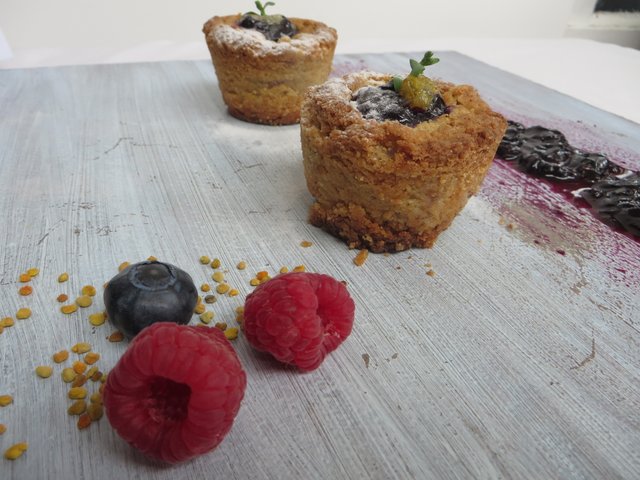
The tart is perhaps the oldest Italian sweet, as there is no historical reference from which one can derive its genesis, popular tradition, however, brings back a legend that makes it go back to before the Christian era. The legend tells of a pagan rite in honor of the mermaid Partenope. In fact, Parthenope had established his home in the Gulf of Naples, and every spring rose from the waters and cheered the people of the place with his song. The inhabitants, to thank her, decided to give her the gift of the most precious things they had. They commissioned seven girls to deliver the gifts, all symbolically representative: flour (strength and wealth), ricotta (work and fruit), eggs (renewal of life), soft wheat boiled in milk (symbol of the two kingdoms), water of orange flowers (symbolizing the thanks of nature), spices (representing distant peoples) and sugar (symbol of the sweetness of the song of Partenope). In fact, if you think about it, this legend can be interpreted in another way. First of all, ricotta and sugar are nothing but the culinary transposition of milk and honey present in the votive offerings of the first Christian ceremonies. The eggs, then, symbolize the return to life and the orange flower water, represents the awakening of nature. And so all to symbolize the return of spring. However, the legend ends with Partenope who places the gifts received at the feet of the gods, who appreciate, return the sweet. At that point the mermaid, happy with the appreciation rather than eating it, gives it to the inhabitants who had shown so much generosity.
Less legendary and more realistic, is the story that the creation of the meal by a nun in the ancient convent of S. Gregorio Armeno. The creator of modern meals, in fact, combined the ingredients in the way we know today, starting from the popular recipe that already existed. He gave his culinary interpretation a mystical meaning, as symbolizing the Resurrection of Christ. Hence also the custom of preparing this dessert on Good Friday and to consume it during Easter.
Being a sweet "poor", the pastiera never saw the glories of the Neapolitan courtesan cuisine. One day, however, this Marquis De Rubis, traveling to Naples, had the misfortune to break the carriage wheel that carried him there. Being almost night, he had to ask hospitality from a peasant family. This is how he tasted this cake and was fascinated by it, so much so that he had the recipe given to him and, therefore, introduced him to the court of the Bourbons.
The last episode starring the pastiera, this time documented, concerns the Bourbons. It is said that Queen Mariateresa D'Austria, wife of King Ferdinand II of Bourbon, was nicknamed "the Queen who never smiles", one day, yielding to the insistence of her husband, she consented to taste a slice of pastiera and could not make Unless smiling, pleased at the good-natured mockery of the King who underlined his obvious satisfaction, in tasting the Neapolitan specialty. At this point the King exclaimed: "To make my wife smile, we wanted the Pastiera, now I'll have to wait for the next Easter to see her smile again".
In the recent past, the typical Easter cake represented a family ritual that was difficult to avoid. My grandfather always tells me that the preparation began a few days before Good Friday, because the grain was taken and soaked in water for a few days. Then on Holy Thursday, the ungrateful task of mixing the ricotta and the sugar was for the youngsters at home. The operation apparently simple, became boring as they were preparing as many meals as were the most expensive people, starting from the family to end the neighbors. In the end they were also prepared for 20. And, the nice thing is that if you gave it, you would receive another one as a gift. In short, a sort of exchange of gifts, only a bit 'monothematic. For this reason, a myriad of variations spread: with rice, with spaghetti, with spelled, with custard, with chocolate. In the end, everyone interpreted his own pie, as can be seen from the many different recipes that exist in circulation.

Ingredients
Quantity: 1 tart 25cm in diameter
For the base of shortcrust pastry
300g of flour
90g of powdered sugar
1 pinch of salt
1/2 teaspoon of baking powder
the peel of 1/2 lemon
90g of cubed butter
2 eggs at room temperature
For the stuffing
250g grapes
the juice of 1 lemon
1 teaspoon of cinnamon
1 teaspoon of nutmeg
2 tablespoons of sugar
1 tablespoon of raisins
2 tablespoons of grapes jam
Preparation: 15 minutes> Cooking: 30 minutes> Additional time: 1 hour rest>
Ready in: 1 hour 45 minutes
In a bowl, collect flour, sugar, salt, yeast and lemon zest. Stir well.
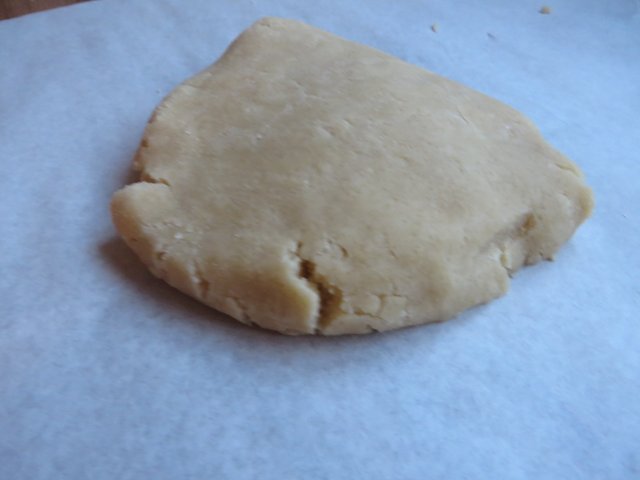
Transfer to a mixing bowl and add the cubed butter. Operate the mixer intermittently for about 30 seconds, so as to mix the butter and flour and the latter absorb the butter.
Return the mix in the bowl and add the eggs previously beaten in a small bowl.
Mix everything first with a spatula and then with your hands, just long enough to create a compact dough.
Wrap in plastic film and store in the fridge for 1 hour.
Meanwhile, prepare the filling:
cat the grapes. Sprinkle with lemon juice, season with cinnamon, nutmeg and sugar. Add the raisins and mix together.
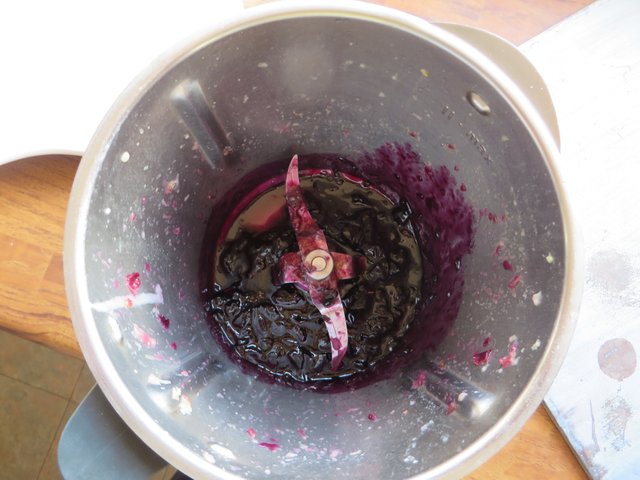
Cover with a sheet of foil and place in the fridge.
Heat the oven to 190 ° C.
Retray the shortcrust pastry from the fridge and spread it on a lightly floured pastry.
Create a dish 3 cm diameter approximately and 5mm in thickness. If desired, leave aside 1/5 of the dough to create decorative lozenges. Line an aluminum mold for pies with baking paper (if you use a ceramic one you will not need baking paper) and then transfer it into the pastry base.
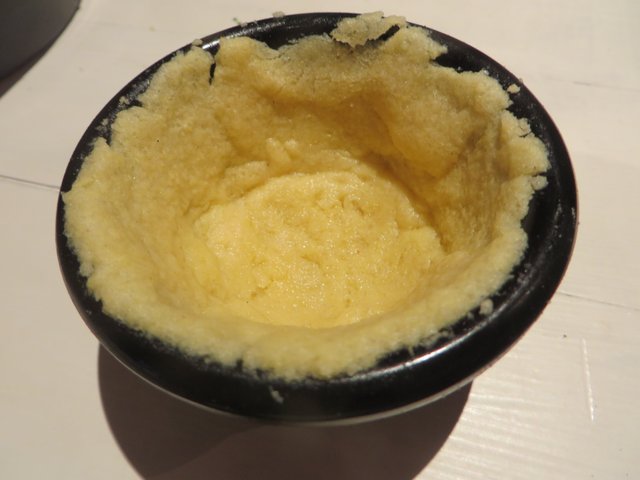
Finish the edges well and puncture the bottom. Lay the 2 tablespoons of grapes jam on the bottom and then pour over the mixture of grapes and raisins prepared previously including the syrup that will be created between the sugar and the juice of the grapes. Lay down on the lozenges if you like and bake. Cook for 30 minutes or until the pastry is golden .
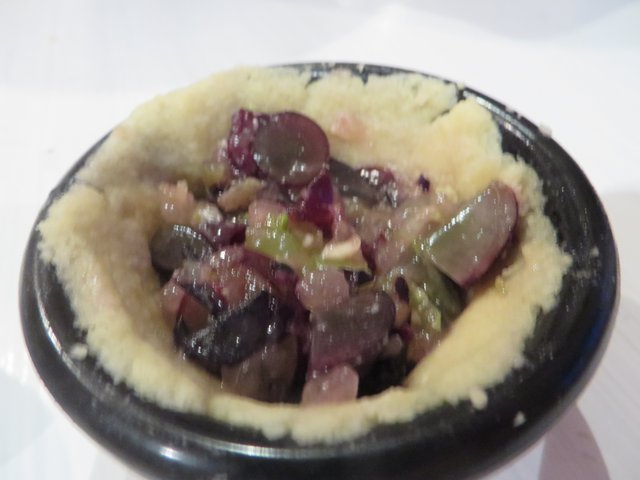
Remove from oven, allow to cool and serve. If the pastry becomes too soft If you spread it, the pastry becomes too soft, finish to line the pan, then put it in the freezer for 5-10 minutes. Then, fill it quickly and place it directly in the oven. Apple jam For this tart, use a quick homemade grapes jam that you find in this recipe. Of course you can use a packaged or even replace it with a jam of apricots or peaches.
Decorated as you like and serve.
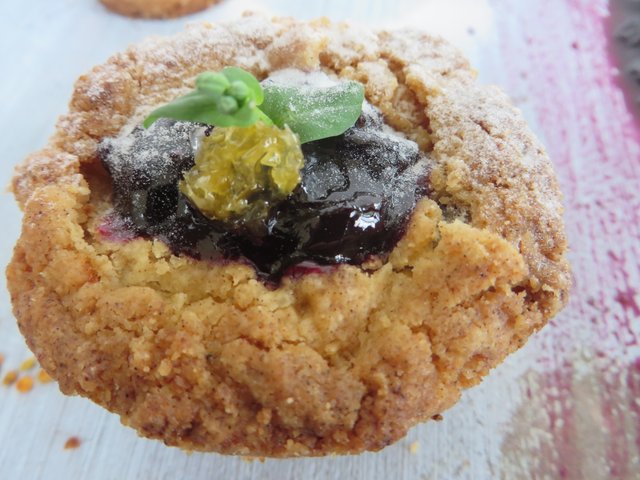
Ciao mondo di steemit eccoci di nuovo per un'altra fantastica settimana di steemit iron chef.
Grazie a @progressinechef per questa competizione culinaria così ben organizzata oggi vi presento le torte di uva e rum
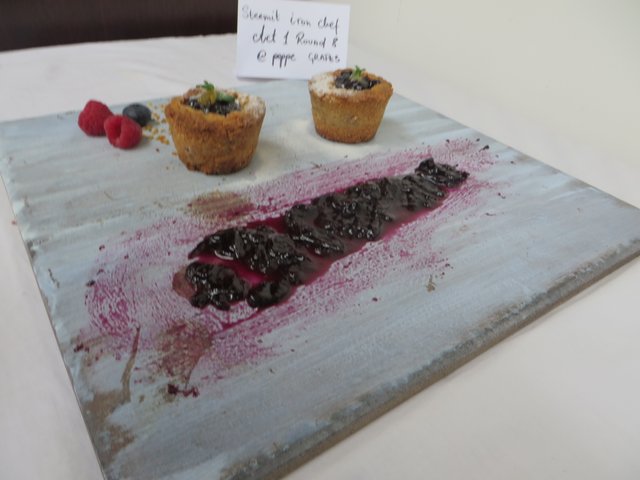
È il più vecchio dolce italiano, non è un riferimento storico da cui si può derivare la sua genesi, la tradizione popolare, tuttavia, riporta all'era cristiana. Partenope di un rito pagano in onore della sirena Partenope. Infatti, Parthenope aveva stabilito la sua casa nel Golfo di Napoli, e ogni primavera dalle acque. Gli abitanti delle cose più preziose che avevano. Hanno commissionato a sette ragazze di consegnare i doni, farina (forza e ricchezza), ricotta (lavoro e frutta), uova (rinnovamento della vita), grano tenero bollito nel latte (simbolo dei due regni), acqua di fiori d'arancio (che simboleggiano il grazie della natura), spezie (simbolo della dolcezza della canzone di Partenope). In effetti, se ci pensi, questa leggenda può essere interpretata in un altro modo. Christian, prima di tutto, la ricotta e lo zucchero non sono altro che la trasposizione culinaria del latte e del miele. Le uova, quindi, simboleggiano il risveglio della natura. E quindi sono tutto per simboleggiare il ritorno della primavera. Tuttavia, la leggenda termina con Partenope, che apprezza il ritorno del dolce. A tal punto la sirena, darla agli abitanti che avevano mostrato tanta generosità.
Meno leggendario e più realistico, è la storia della creazione del pasto di una monaca nell'antico convento di S. Gregorio Armeno. Nel modo in cui lo sappiamo, partendo dalla ricetta popolare che già esisteva. Ha dato la sua interpretazione culinaria al significato mistico, come simbolo della risurrezione di Cristo. Da qui anche l'abitudine di preparare questo dolce a Pasqua.
Essendo un dolce "povero", i pasti non hanno mai visto le glorie della cucina cortigiana napoletana. Un giorno, comunque, questo Marchese De Rubis, in viaggio per Napoli, ebbe la sfortuna di rompere la ruota del carro che lo portava lì. Essendo quasi notte, ha dovuto chiedere ospitalità da una famiglia di contadini. Così assaggiava, tanto che gli aveva dato la ricetta e quindi lo presentò alla corte dei Borboni.
L'ultimo episodio con protagonista la pastiera, questa volta documentata, riguarda i Borboni. Si dice che la regina Mariateresa d'Austria, moglie del re Ferdinando II di Borbone, fosse soprannominata "la regina che non sorride mai", un giorno, cedendo all'insistenza del marito, fa senza sorridere, assaggiando la specialità napoletana. A questo punto il re esclamò: "Per far sorridere mia moglie, volevamo la Pastiera, ora dovrò aspettare il prossimo".
Nel passato recente, il tipico dolce pasquale è un rituale familiare difficile da evitare. Mio nonno mi dice sempre che la preparazione è iniziata qualche giorno prima del Venerdì Santo. Poi, il Giovedì Santo, l'ingrato compito di mescolare la ricotta e lo zucchero era per i giovani a casa. L'operazione apparentemente semplice, divenne la persona più costosa, a partire dalla famiglia per porre fine ai vicini. Alla fine erano anche preparati per 20. Ne avresti ricevuto un altro come regalo. Insomma, una sorta di scambio di doni, solo un po 'monotematici. Per questo motivo, una miriade di variazioni si diffuse: con riso, con farro, con crema pasticcera, con cioccolato. Alla fine, tutti hanno interpretato la sua torta.
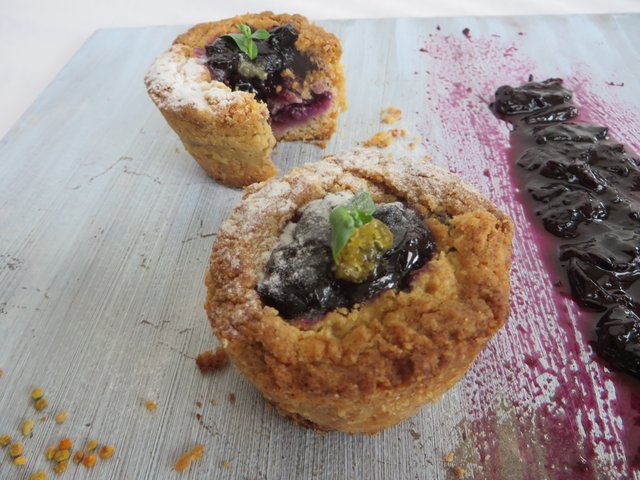
ingredienti
Quantità: 1 torta da 25 cm di diametro
Per la base di pasta frolla
300 g di farina
90 g di zucchero a velo
1 pizzico di sale
1/2 cucchiaino di lievito
la buccia di 1/2 limone
90 g di burro a cubetti
2 uova a temperatura ambiente
Per il ripieno
Uva da 250 g
il succo di 1 limone
1 cucchiaino di cannella
1 cucchiaino di noce moscata
2 cucchiai di zucchero
1 cucchiaio di uvetta
2 cucchiai di marmellata di uva
Preparazione: 15 minuti> Cottura: 30 minuti> Tempo aggiuntivo: 1 ora di riposo>
Pronto in: 1 ora e 45 minuti
In una ciotola, raccogliere la farina, lo zucchero, il sale, il lievito e la scorza di limone. Mescolare bene.
Trasferire in una terrina e aggiungere il burro a cubetti. Azionare il miscelatore in modo intermittente per circa 30in modo da mescolare burro e farina e questi ultimi assorbono il burro.
Rimetti il mix nella ciotola e aggiungi le uova precedentemente sbattute in una piccola ciotola.
Mescolare il tutto dapprima con una spatola e poi con le mani, giusto il tempo necessario per creare un impasto compatto.
Avvolgere in un film di plastica e conservare in frigorifero per 1 ora.
Nel frattempo, prepara il ripieno:
gatto l'uva. Cospargere con succo di limone, condire con cannella, noce moscata e zucchero. Aggiungere l'uvetta e mescolare.
Coprire con un foglio di carta e riporlo in frigorifero.
Riscaldare il forno a 190 ° C.
Retraffare la pasta frolla dal frigo e stenderla su una sfoglia leggermente infarinata.
Creare un disco di 30 cm di diametro circa e 5 mm di spessore. Se lo si desidera, lasciare da parte 1/5 dell'impasto per creare losanghe decorative. Foderare uno stampo in alluminio per torte con carta da forno (se usi uno in ceramica non avrai bisogno di carta da forno) e poi trasferirlo nella base di pasta.
Finisci bene i bordi e fora il fondo. Appoggia sul fondo 2 cucchiai di marmellata di uva e poi versa sopra il composto di uva e uvetta preparata in precedenza compreso lo sciroppo che verrà creato tra lo zucchero e il succo delle uve. Sdraiati sulle losanghe, se vuoi, e inforna. Cuocere per 30 minuti o fino a quando la pasta è dorata.
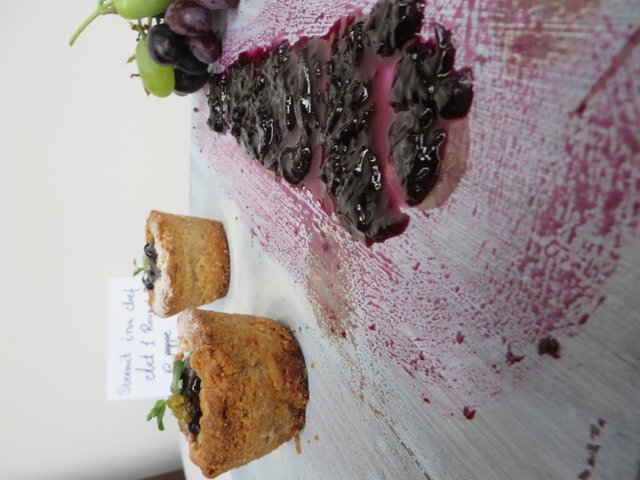
Togliere dal forno, lasciare raffreddare e servire. Se la pasta diventa troppo morbida Se la stendi, la pasta diventa troppo morbida, finisci per rivestire la padella, quindi mettila in freezer per 5-10 minuti. Quindi, riempilo velocemente e posizionalo direttamente nel forno. Confettura di mele Per questa torta, usa una marmellata di uva fatta in casa che trovi in questa ricetta. Naturalmente è possibile utilizzare un pacchetto o addirittura sostituirlo con una marmellata di albicocche o pesche.
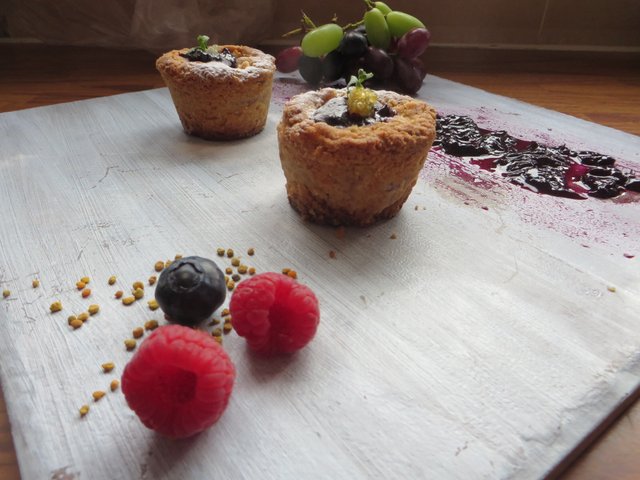
Decorato come ti piace e servi.
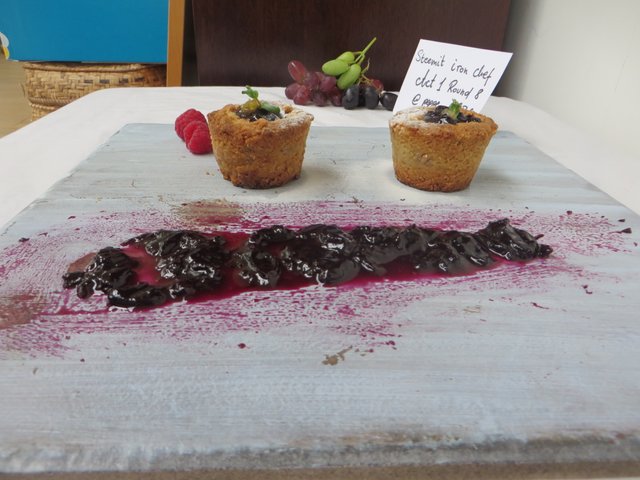
You got a 1.65% upvote from @buildawhale courtesy of @peppe!
If you believe this post is spam or abuse, please report it to our Discord #abuse channel.
If you want to support our Curation Digest or our Spam & Abuse prevention efforts, please vote @themarkymark as witness.
looks and sound amazing
Too bad I don't eat cakes or sweets until easter ... ☹️ I have to remember this past easter!
my friend its gest 2 week away good luke
First of all thanks for the nice story, i really enjoyed reading and learning!
Your tartlet looks so nicely done and i am sure they must be sooo delicious!
Rum-raisin...perfect combination here!